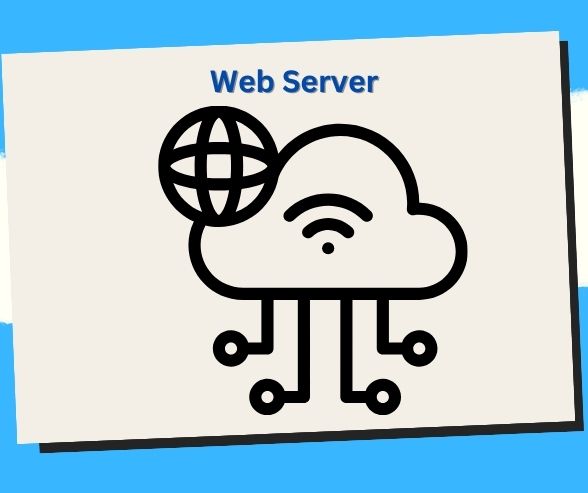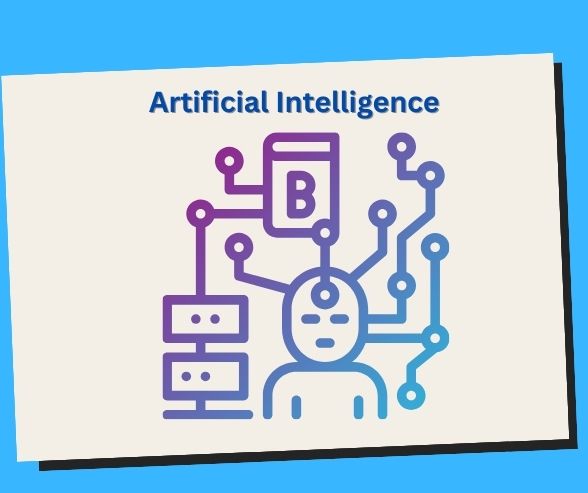
Crafting Connections: The Art of Understanding Your Target Audience for Content Marketing
Uncover the secrets of effective content marketing by pinpointing your ideal audience and crafting tailored messages.
Hitting the Bullseye: Guide to Identifying Your Target Audience for Content Marketing 🎯
Effective content marketing hinges on understanding and connecting with your target audience. Identifying your audience allows you to tailor your content to their needs, preferences, and pain points, maximizing its impact and engagement. In this guide, we’ll delve into the intricacies of identifying your target audience for content marketing, providing you with actionable strategies and insights to reach the right people with the right message.
Understanding the Importance of Target Audience Identification 🌟
Before diving into the process of identifying your target audience, it’s crucial to recognize why this step is essential for content marketing success. Your target audience serves as the foundation upon which your entire content strategy is built. By understanding who your audience is, you can create content that resonates with them, fosters engagement, and ultimately drives conversions.
Conducting Market Research 📊
Market research is the cornerstone of identifying your target audience. Start by analyzing demographic data such as age, gender, location, income level, and occupation to paint a picture of your ideal customer. Utilize both primary research methods (surveys, interviews, focus groups) and secondary research sources (industry reports, competitor analysis) to gather comprehensive insights into your target market.
Creating Buyer Personas 🚶♂️
Once you’ve collected sufficient data, distill it into actionable buyer personas – fictional representations of your ideal customers based on real data and insights. Each buyer persona should include demographic information, psychographic details (such as interests, values, and pain points), behavioral patterns, and goals. By creating detailed personas, you can better understand and empathize with your audience, guiding your content creation efforts.
Analyzing Audience Behavior 📈
Beyond demographic and psychographic data, it’s essential to analyze your audience’s behavior to gain deeper insights into their preferences and interests. Use web analytics tools like Google Analytics to track website traffic, user engagement, and conversion metrics. Social media analytics platforms can also provide valuable data on audience demographics, engagement levels, and content preferences.
Leveraging Customer Feedback and Insights 🗣️
Your existing customers are a valuable source of insights into your target audience. Collect feedback through surveys, reviews, and direct communication channels to understand their needs, preferences, and pain points. Pay attention to recurring themes and sentiments expressed by your customers, as these can inform your content strategy and help you better serve your audience.
Monitoring Competitor Strategies 🕵️♀️
Keep an eye on your competitors’ content marketing strategies to gain insights into their target audience and content tactics. Analyze the type of content they’re producing, the channels they’re using, and the engagement they’re receiving. Identify gaps or opportunities in the market that you can capitalize on to differentiate your brand and attract your target audience.
Utilizing Audience Segmentation 🎯
Not all members of your target audience are the same – they have different preferences, needs, and behaviors. Utilize audience segmentation to divide your target audience into smaller, more manageable groups based on common characteristics or behaviors. This allows you to create highly targeted content that speaks directly to the specific needs and interests of each segment.
Testing and Iterating 🔄
Identifying your target audience is an ongoing process that requires testing, experimentation, and iteration. Continuously monitor the performance of your content across different audience segments and channels. Use A/B testing to compare the effectiveness of different messaging, formats, and distribution strategies. Incorporate feedback and insights gleaned from analytics into your content strategy to refine and optimize your approach over time.
Benefits of Identifying Your Target Audience
- Increased Relevance: Tailoring your content to a specific audience ensures that it addresses their unique needs, challenges, and interests, making it more relevant and engaging.
- Improved ROI: By focusing your efforts on reaching the right audience, you can optimize your resources and maximize the return on your content marketing investment.
- Enhanced Engagement: Understanding your audience allows you to craft messaging that resonates with them on a deeper level, fostering stronger connections and higher levels of engagement.
- Better Conversion Rates: Targeted content is more likely to attract qualified leads and convert them into customers, driving sales and revenue growth.
- Reduced Wastage: Avoid wasting time and resources on reaching uninterested or irrelevant audiences, leading to more efficient and effective marketing campaigns.
- Building Brand Loyalty: By consistently delivering valuable content tailored to their needs, you can cultivate a loyal following that sees your brand as a trusted resource.
- Competitive Advantage: Understanding your audience’s preferences and behaviors allows you to differentiate your brand and offer unique value propositions that resonate with them.
- Deeper Insights: Proactively identifying your target audience provides valuable insights into their demographics, psychographics, and buying behavior, informing future marketing strategies.
- Opportunities for Innovation: Knowing your audience’s pain points and desires can inspire new product or service offerings that meet their needs and exceed their expectations.
- Long-Term Sustainability: Building a strong relationship with your target audience lays the foundation for sustainable growth and success, even as market dynamics evolve.
Case Studies: Real-World Examples of Target Audience Identification
- Netflix: Through data analysis and user segmentation, Netflix identifies distinct audience segments based on viewing habits, preferences, and demographics. This allows them to recommend personalized content, leading to higher user satisfaction and retention.
- Dove: Dove’s “Real Beauty” campaign resonates with its target audience of women by challenging traditional beauty standards and promoting body positivity. By understanding their audience’s desire for authenticity and inclusivity, Dove has built a strong emotional connection with its customers.
- Peloton: Peloton targets fitness enthusiasts who value convenience and community. Through targeted advertising and content tailored to their audience’s fitness goals and aspirations, Peloton has grown into a leading brand in the home fitness industry.
- Birchbox: Birchbox caters to beauty enthusiasts who enjoy trying new products and seeking personalized recommendations. By collecting data on customer preferences and feedback, Birchbox delivers curated beauty boxes that resonate with its target audience, driving customer loyalty and retention.
- Airbnb: Airbnb’s target audience includes travelers seeking unique and authentic experiences. By analyzing user behavior and feedback, Airbnb offers personalized recommendations and tailored experiences that cater to their audience’s travel preferences and interests.
- Trello: Trello targets individuals and teams looking for efficient project management solutions. Through content marketing efforts focused on productivity tips, project management best practices, and case studies, Trello attracts and engages its target audience, driving user adoption and loyalty.
- Red Bull: Red Bull targets adventurous and adrenaline-seeking individuals through extreme sports sponsorships, events, and content. By aligning their brand with the interests and lifestyles of their target audience, Red Bull has built a passionate community of loyal customers.
- HelloFresh: HelloFresh targets busy professionals and families looking for convenient meal solutions. Through targeted advertising and content highlighting the benefits of meal kit delivery, HelloFresh attracts and retains customers who value convenience and quality.
- Warby Parker: Warby Parker targets fashion-conscious individuals who seek affordable and stylish eyewear. By offering a wide range of trendy frames at competitive prices and leveraging social media influencers, Warby Parker has captured the attention of its target audience and disrupted the eyewear industry.
- Patagonia: Patagonia targets environmentally conscious outdoor enthusiasts who value sustainability and ethical practices. Through content marketing campaigns focused on environmental activism and corporate responsibility, Patagonia appeals to its audience’s values and beliefs, driving brand loyalty and advocacy.
Key Takeaways
- Research Extensively: Invest time and resources into understanding your audience’s demographics, interests, behaviors, and pain points through market research and data analysis.
- Create Buyer Personas: Develop detailed profiles of your ideal customers based on demographic and psychographic information, including their goals, challenges, preferences, and buying behavior.
- Utilize Analytics Tools: Leverage analytics tools and platforms to gather insights into your audience’s online behavior, engagement patterns, and content preferences.
- Engage with Your Audience: Actively engage with your audience through social media, surveys, polls, and feedback mechanisms to gather valuable insights and foster relationships.
- Monitor Competitors: Keep an eye on competitors’ strategies and audience engagement tactics to identify opportunities and trends in your industry.
- Segment Your Audience: Divide your audience into distinct segments based on common characteristics and preferences to tailor your content and messaging more effectively.
- Test and Iterate: Experiment with different content formats, messaging strategies, and targeting criteria to identify what resonates best with your audience, and iterate based on feedback and performance data.
- Stay Flexible: Be open to adjusting your target audience personas and content strategy as market dynamics and audience preferences evolve over time.
- Align Content with Audience Needs: Ensure that your content addresses your audience’s needs, challenges, and interests, providing value and relevance at every touchpoint.
- Measure Success: Establish key performance indicators (KPIs) to track the effectiveness of your content marketing efforts in reaching and engaging your target audience, and use data-driven insights to optimize your strategy accordingly.
FAQ
1. How do I define my target audience if I’m just starting my business?
- Start by conducting market research to identify potential customer segments based on demographics, interests, and needs. Refine your target audience personas as you gather more data and insights over time.
2. What are some effective ways to gather information about my target audience?
- Utilize surveys, interviews, social media analytics, website analytics, and customer feedback to gather information about your audience’s demographics, preferences, behaviors, and pain points.
3. Can I have multiple target audiences for my content marketing strategy?
- Yes, you can have multiple target audiences, but it’s essential to create distinct buyer personas and tailor your content and messaging to each segment’s specific needs and preferences.
4. How often should I revisit and update my target audience personas?
- Regularly revisit and update your target audience personas as your business evolves, market trends shift, and audience preferences change. Aim to refresh your personas at least once a year or whenever significant changes occur.
5. What if my target audience doesn’t respond to my content?
- Analyze your content performance data to identify potential issues such as mismatched messaging, irrelevant topics, or ineffective distribution channels. Adjust your content strategy accordingly based on audience feedback and insights.
6. How can I reach a niche target audience with limited resources?
- Focus on niche marketing tactics such as niche-specific content creation, targeted advertising, influencer partnerships, and community engagement to reach and engage your niche audience effectively within your budget constraints.
7. Should I prioritize quantity or quality when targeting my audience with content?
- Quality should always take precedence over quantity. Focus on creating high-quality, relevant content that provides value to your audience and fosters meaningful engagement, rather than producing a high volume of mediocre content.
8. What if my target audience is constantly changing or evolving?
- Stay agile and adaptable by monitoring market trends, audience behavior, and competitor strategies closely. Continuously gather feedback and insights from your audience to inform adjustments to your content marketing strategy in response to changing dynamics.
9. How can I differentiate my content to stand out to my target audience?
- Differentiate your content by focusing on your unique value proposition, brand voice, and storytelling approach. Offer fresh perspectives, insights, and solutions that resonate with your audience’s needs and aspirations, setting yourself apart from competitors.
10. Can I use data to refine and optimize my target audience identification process?
- Absolutely! Leverage data analytics tools and platforms to gather actionable insights into your audience’s behavior, preferences, and engagement patterns. Use data-driven decision-making to refine your target audience personas and optimize your content strategy for better results.
Mastering the art of identifying your target audience is not just about casting a wide net; it’s about honing in on the right catch. By understanding who your audience is, what they want, and how they behave, you can create content that speaks directly to their hearts and minds. Remember, it’s not about reaching everyone—it’s about reaching the right ones. 🎯
Conclusion
Identifying your target audience is a fundamental step in creating a successful content marketing strategy. By conducting thorough market research, creating detailed buyer personas, analyzing audience behavior, leveraging customer feedback, monitoring competitor strategies, utilizing audience segmentation, and testing and iterating on your approach, you can hone in on the right audience for your content and maximize its impact. So roll up your sleeves, dive into the data, and start connecting with your audience in meaningful ways! 🚀
Key Phrases
- Target audience
- Content marketing
- Audience identification
- Demographic analysis
- Audience segmentation
- Persona development
- Content strategy
- Engagement optimization
- Market research
- Audience profiling
Best Hashtags
- #TargetAudience
- #ContentMarketing
- #AudienceInsights
- #MarketingStrategy
- #Demographics
- #PersonaDevelopment
- #ContentStrategy
- #AudienceEngagement
- #MarketResearch
- #AudienceProfiling
Save/Share this post with QR CODE
Disclaimer
This article is for informational purposes only and does not constitute endorsement of any specific technologies or methodologies and financial advice or endorsement of any specific products or services.
📩 Need to get in touch?
Feel free to Email Us for comments, suggestions, reviews, or anything else.
We appreciate your reading. 😊Simple Ways To Say Thanks & Support Us:
1.) ❤️GIVE A TIP. Send a small donation thru Paypal😊❤️
Your DONATION will be used to fund and maintain MKTGS.com
Subscribers in the Philippines can make donations to mobile number 0917 906 3081, thru GCash.
3.) 🛒 BUY or SIGN UP to our AFFILIATE PARTNERS.
4.) 👍 Give this news article a THUMBS UP, and Leave a Comment (at Least Five Words).
AFFILIATE PARTNERS

World Class Nutritional Supplements - Buy Highest Quality Products, Purest Most Healthy Ingredients, Direct to your Door! Up to 90% OFF.
Join LiveGood Today - A company created to satisfy the world's most demanding leaders and entrepreneurs, with the best compensation plan today.








Comments (0)